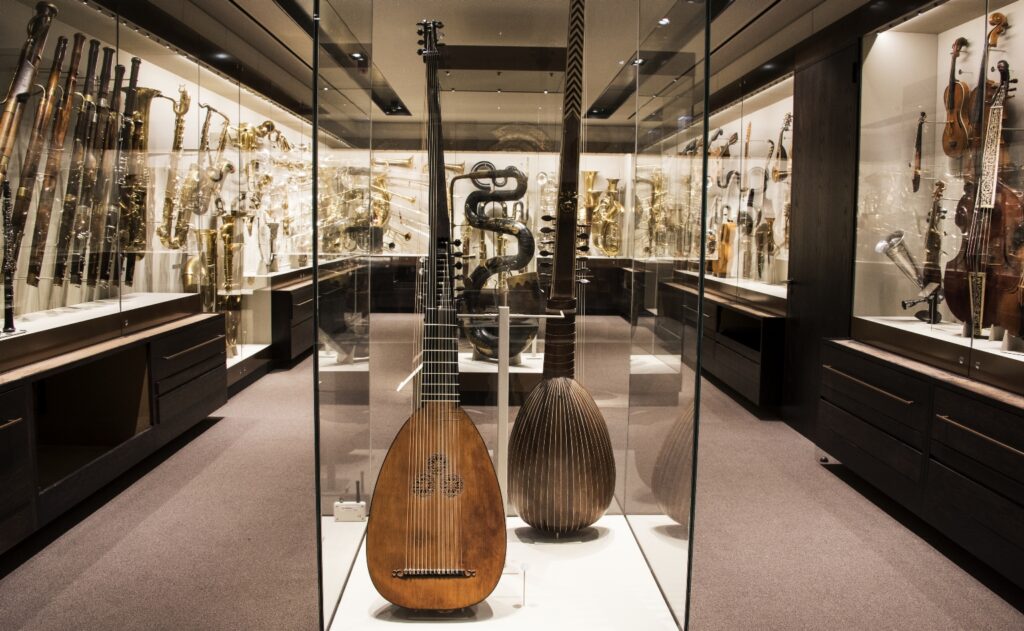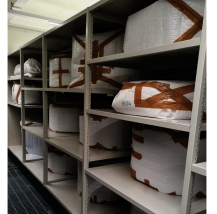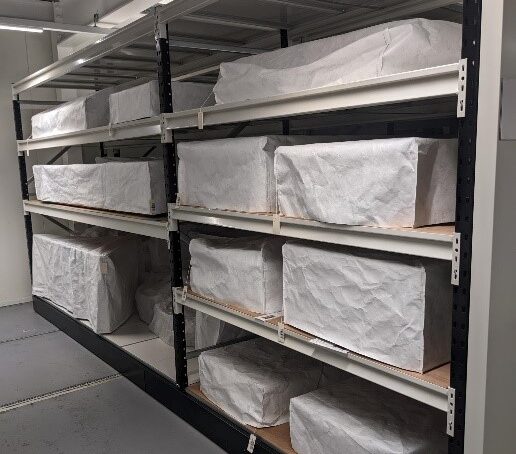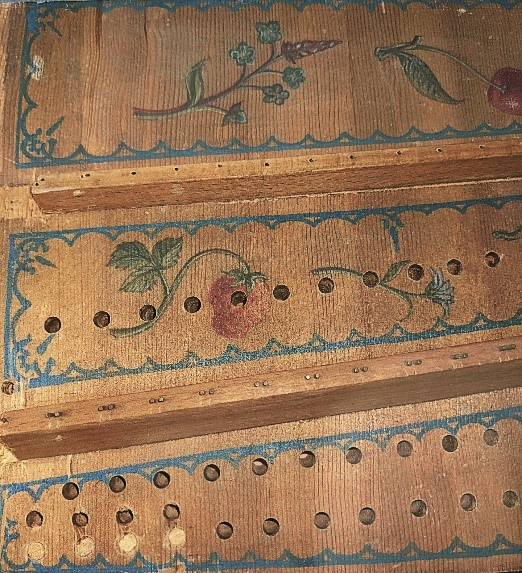In this blog, Veronica Wilson discusses her project working with musical instruments in storage. Veronica started this project as a Thompson-Dunlop Intern and then joined the Conservation & Collections Management team as a Library Assistant (funded by Thompson-Dunlop endowment and the Nagler bequest).

Wolfson gallery at St Cecilia’s Hall
The University of Edinburgh holds a rare and unique collection of musical instruments. Many stand proudly on display in St Cecilia’s Hall, the music museum of the University, visible to the public and played by musicians from around the world. The rest are in storage, available only by request for research, study, or viewing. The collection at the University Collections Facility (UCF) consists of instruments too large to be stored in any of the other locations. Though the time since they were last played can span lifetimes, the collection is anything but silent.

Plastic-wrapped instruments, University Collections Facility
The instruments and accessories stored here moved to the UCF from different storage areas of the Main Library and from the Reid Concert Hall’s basement. When I started my internship for St Cecilia’s Hall in June 2022, all but a few recent acquisitions were wrapped in plastic bubble wrap, which had started to degrade. That wrapping method creates a microclimate which prevents pest and water incursion, but doesn’t allow for regular conservation or inspection of the instrument. To keep the collection alive we must let it breathe. Thus, the aim of the Thomson Dunlop internship was to create made-to-measure covers from storage-safe material, allowing access to each instrument for research and conservation purposes. Our material of choice for the task was Tyvek, a lightweight plastic-based fabric.

Instruments with new bespoke Tyvek covers
Tyvek must be sewn carefully because each puncture is permanent. It requires clips instead of pins, and top and bottom edges lined with stiff tape to keep the material from getting caught in the machine. I started the internship in June and sewed over 120 covers by the end of August. I returned in November as a Library Assistant, to finish what I had started, sewing covers for the remaining instruments of the collection stored in the UCF and creating barcode labels that linked with Vernon CMS (collection management software).

Instruments with new bespoke Tyvek covers
I spent my time in the UCF measuring, drawing out patterns, calculating seam allowances, sewing, and printing labels. This storage unit holds centuries of musical history, but each instrument means so much more. Long-forgotten people live on through hand painted motifs, through names carved on spinet lids and writing exercises on the undersides of repurposed piano stands. They may not be on display, but these “songs that voices never shared” are still breaking the silence of time[1].

Wrestplank of a harpsichord by Ioannes Ruckers, Antwerp 1637 (MIMEd 4305)
[1] Simon and Garfunkel

Wonderful blog and wonderful work! A Herculean amount of sewing, but a great asset for the future.
Thank you for posting.
This article was enlightening. Thankful for this talented person who did all the preserving of the instruments. Her dedication to the project deserves recognition.